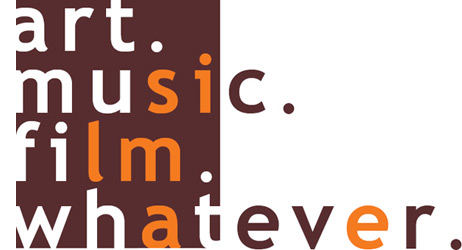In these next two (and final) parts, one could say I get into the nitty gritty of my argument, really fleshing it all out and making large hypotheses (perhaps even sweeping generalizations).
To catch up, read
part 1 here,
part 2 here, and
part 3 here.
Christo and Jeanne-Claude, the Politics of their Art: How they are (shrewdly and discreetly) Socialist, Anti-American and Revolutionary - part 4
While the Christos’ major works in Europe have involved the wrapping of well known man-made public structures such as
Wrapped Reichstag and
The Pont Neuf Wrapped, their projects in America (and Japan), with the exception of their early work
Museum of Contemporary Art, Chicago, Wrapped and Wrapped Floor and Stairway (pictured), have dealt with natural creations and mostly rural areas. What are they trying to declare in America that they have not bothered to declare elsewhere in the world? Why get American’s out of their bustling cities, their million dollar homes, and their countless shopping malls and into the wilderness and back in touch with nature? And why not Europeans or anyone else? These works take place in rural areas where more humble communities can be found, some living off the land they own which the Christos have borrowed for the duration of the work. The Christos are forcing an interaction between urban Americans and their more rustic neighbors as well as the world around them; a simpler and more real way of life not as far as they had imagined.


The careful planification of Christo and Jeanne-Claude’s works in America, compared to anywhere else, can be read as a critique of America’s cultural takeover and overly capitalistic character. Though this may not be completely intentional (Christo and Jeanne-Claude would never execute a work to get such an individual point across) their work is made to make the viewer think, feel, and contemplate outside the everyday. Consequently, from the average opinionated individual, such a reading could not help but be extracted. Their work, particularly in America, juxtaposes the industrial strength of the 20th and 21st centuries with the timeless beauty of the natural world, bringing up environmental concerns more relevant in the United States than anywhere else. Much of their work makes use of disparities and juxtapositions.
The Umbrellas, for example, was fashioned in order to spur discussions over the differences between Japanese and American cultures. Planned and executed in the stretch of ten years, the work was immaculately deliberate. It used the countries’ many differences involving climate and land usage and availability, juxtaposing Japan (and the Pacific East’s) limited yet cultivated lush mountain climate with American West’s vast and arid often uncultivated valleys. Japan using their resources as efficiently as possible; America with such great potential and so little results. In an interview with the director of 5 of their films Albert Maysles, Jeanne-Claude comments on a visit to colleges in both California and Japan. These talks were conducted in order to recruit workers for the project. During questioning after each of the talks Jeanne-Claude noted that the first question at a Los Angeles university was in regards to the cost of the work and who would pay for it. In Japan, on the other hand, the first question was not economic but rather an aesthetic concern regarding the choice of colors for the umbrellas of each country. Now think about the innumerable diverse reactions to the work from the more than 3 million who visited it during the 14 days the site was open to the public and the millions more who studied it years before and after through diverse forms of media. One can only imagine the great social/critical effect the work had on the two country’s populations and the world.

Their work is subtly yet profoundly revolutionary. It calls for change, inciting it in the viewer in an unforgettable way. The communicative aspect of the Christos’ work causes viewers to question social barriers and prejudices, prejudgments, stereotypes, views, and beliefs. The transcendent side allows us to rise above the everyday and focus on a bigger picture. Because their art is free from any and all forms of dogma it predicts and precedes a world without the need for ideologies. “Having no sympathy with any existing ideology, they attempt to escape into a world without ideologies.” Not so much against, but beyond that, apart from the norm, their art can thus be considered thematically utopian and revolutionary. As Herbert Read finishes off his essay ‘What is Revolutionary Art?’, “REVOLUTIONARY ART IS CONSTRUCTIVE – REVOLUTIONARY ART IS INTERNATIONAL – REVOLUTIONARY ART IS REVOLUTIONARY;” Christo and Jeanne-Claude’s artworks are a perfect embodiment of this superb 1935 essay’s closing lines. And even though Read was writing at the time on formalist artistic trends versus the more realistic, or “superrealism,” of his time, his hailing of the artist who uses pure form as revolutionary is entirely applicable to the Christos.
To be continued. For references, leave me a comment.






































